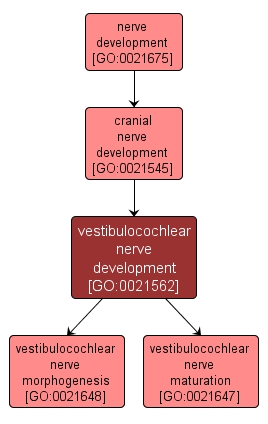| Desc: |
The process whose specific outcome is the progression of the vestibulocochlear nerve over time, from its formation to the mature structure. This sensory nerve innervates the membranous labyrinth of the inner ear. The vestibular branch innervates the vestibular apparatus that senses head position changes relative to gravity. The auditory branch innervates the cochlear duct, which is connected to the three bony ossicles which transduce sound waves into fluid movement in the cochlea. |














